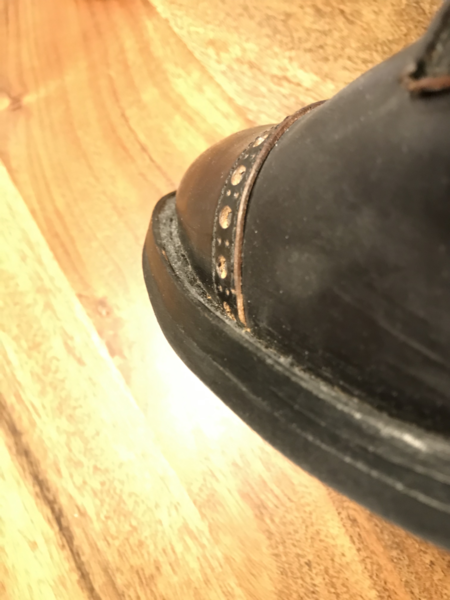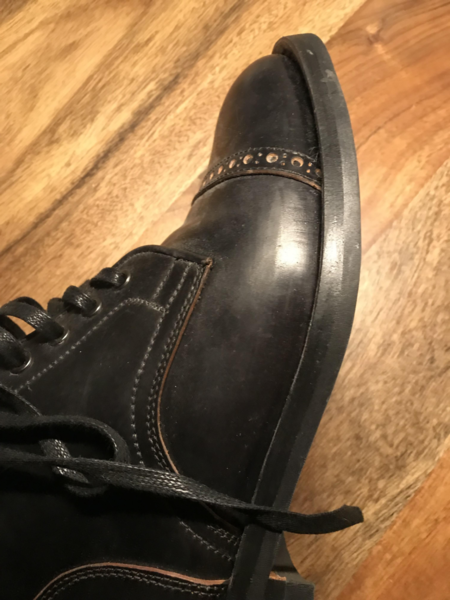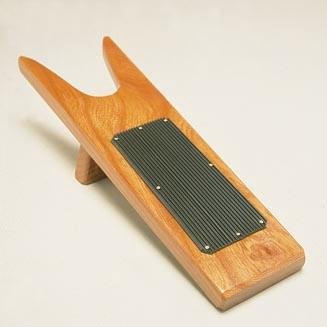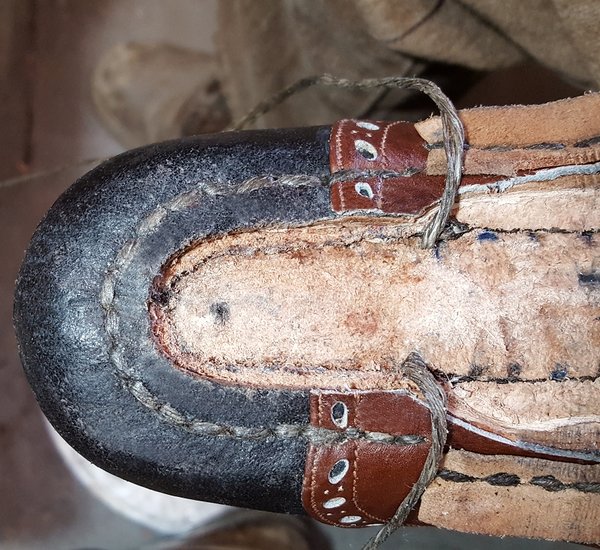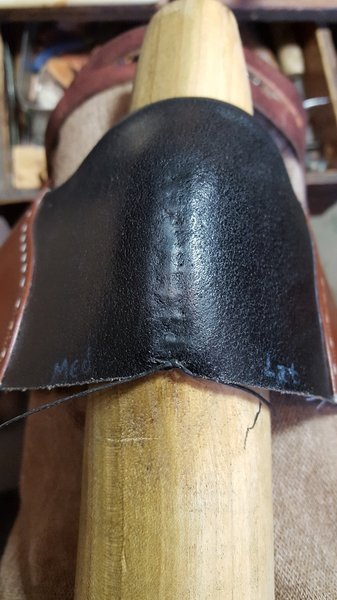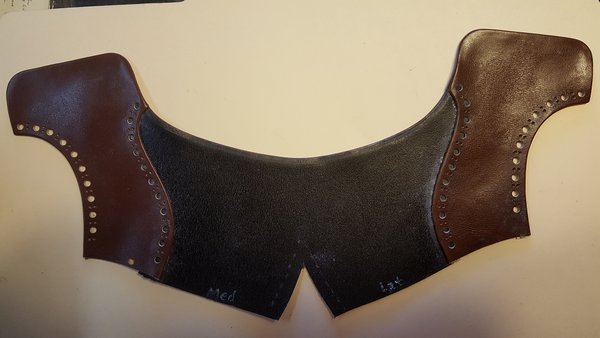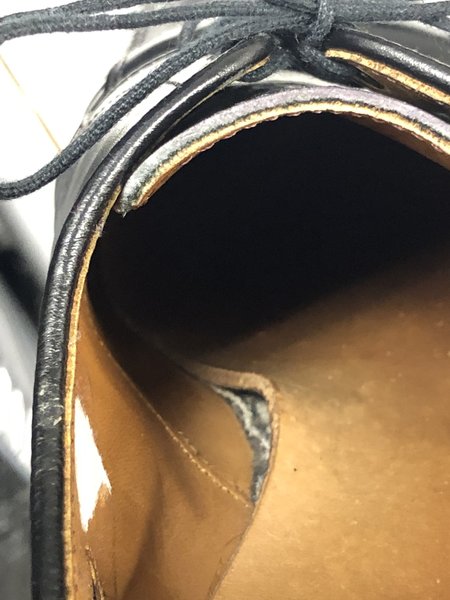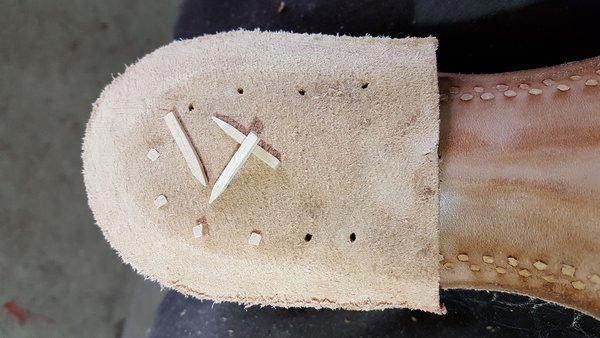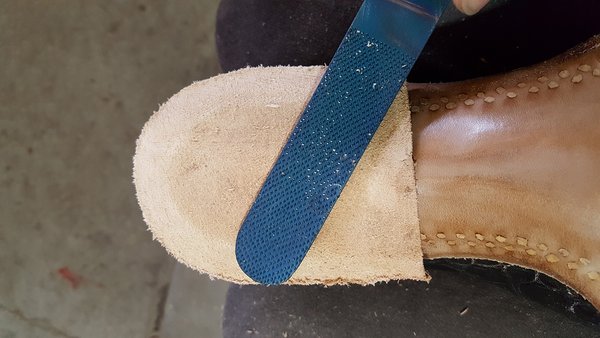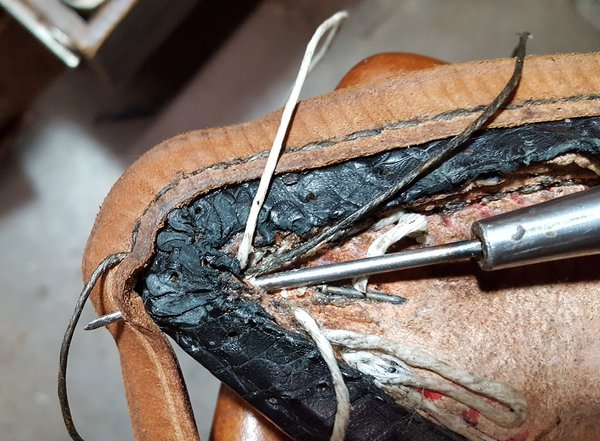eljimberino
Senior Member
- Joined
- Sep 9, 2014
- Messages
- 270
- Reaction score
- 49
Going to throw my hat in the ring here even though I'm going against what has been said previously.
I'm fairly new to 'leather shoes' so I write this seeking knowledge at the risk of sounding stupid.
But in the long run I figure the knowledge will hold me in good stead.
My concern is to the soles and their longevity and their ability to breathe and how those factors interact.
On a pair of single soled leather shoes I received (which the retailer said were 'hard wearing') the toes
started wearing to the point where the closed stitching was exposed after only three wears.
In these parts the road aggregate reflects low property taxes. Imagine fitting your thumb
between each rock. This, combined with my gate, accelerates the wearing of the toe tips.
Now imagine it is raining and how a leather sole would fair in this environment.
My guess is if I kept wearing the shoes I'd only get approximately thirty or so wears out of them before
the soles needed replacing. Please don't tell me I walk wrong. I usually go for a 1000km hike
once a year that usually takes up to eight weeks. I am willing to accept however that the way I walk
is not conducive to the way leather soles should be walked in. Unselfconsciously, my toes must grip
with each step for balance and propulsion. Perhaps this is a reflection of having worn rubber soles
shoes most of my life?
Further, most rubber soled shoes are shaped upwards at the tip whereas most of the leather soled shoes I've seen
have a sharp edge. This sharp edge bears the brunt of the abrasion.
Until such time as I alter my walking style, to limit the wear on what I consider the low durability
if the single leather sole, I have sought the properties of rubber. My alternatives are thus:
1) Wear the leather soles and have them replaced on a frequent basis. For arguments sake
let's say twice a year including postage to and from the manufacturer. I would not trust anyone
where I live.
2) Have them topied. Replace the topy frequently.
3) Buy rubber soled shoes. Have them replaced when they wear out.
4) Have metal toe tips installed.
I am open to any of those alternatives. Some of the above posts suggest that alternative number 1 is the
correct way of wearing leather shoes. This may be true, but is neither economical, not practical, in my case.
Option number four is the next best thing to option number one. I am not sure where options
two and three sit in the preference hierarchy.
For the moment, in the context of sole durability, I am willing to favour a rubber sole in lieu
of the shoes ability to breathe through a leather sole.
How much is the shoe breathing through the fully lined inner sole in any case?
How much does the shoes inability to breathe through the rubber sole effect the longevity of the overall
shoe?
Let's say I can only wear leather soles - what would be my best course of action?
I'm fairly new to 'leather shoes' so I write this seeking knowledge at the risk of sounding stupid.
But in the long run I figure the knowledge will hold me in good stead.
My concern is to the soles and their longevity and their ability to breathe and how those factors interact.
On a pair of single soled leather shoes I received (which the retailer said were 'hard wearing') the toes
started wearing to the point where the closed stitching was exposed after only three wears.
In these parts the road aggregate reflects low property taxes. Imagine fitting your thumb
between each rock. This, combined with my gate, accelerates the wearing of the toe tips.
Now imagine it is raining and how a leather sole would fair in this environment.
My guess is if I kept wearing the shoes I'd only get approximately thirty or so wears out of them before
the soles needed replacing. Please don't tell me I walk wrong. I usually go for a 1000km hike
once a year that usually takes up to eight weeks. I am willing to accept however that the way I walk
is not conducive to the way leather soles should be walked in. Unselfconsciously, my toes must grip
with each step for balance and propulsion. Perhaps this is a reflection of having worn rubber soles
shoes most of my life?
Further, most rubber soled shoes are shaped upwards at the tip whereas most of the leather soled shoes I've seen
have a sharp edge. This sharp edge bears the brunt of the abrasion.
Until such time as I alter my walking style, to limit the wear on what I consider the low durability
if the single leather sole, I have sought the properties of rubber. My alternatives are thus:
1) Wear the leather soles and have them replaced on a frequent basis. For arguments sake
let's say twice a year including postage to and from the manufacturer. I would not trust anyone
where I live.
2) Have them topied. Replace the topy frequently.
3) Buy rubber soled shoes. Have them replaced when they wear out.
4) Have metal toe tips installed.
I am open to any of those alternatives. Some of the above posts suggest that alternative number 1 is the
correct way of wearing leather shoes. This may be true, but is neither economical, not practical, in my case.
Option number four is the next best thing to option number one. I am not sure where options
two and three sit in the preference hierarchy.
For the moment, in the context of sole durability, I am willing to favour a rubber sole in lieu
of the shoes ability to breathe through a leather sole.
How much is the shoe breathing through the fully lined inner sole in any case?
How much does the shoes inability to breathe through the rubber sole effect the longevity of the overall
shoe?
Let's say I can only wear leather soles - what would be my best course of action?

 (and one of those pairs, some Vass oxfords, have double leather soles, so those will last a while...). I'm sure DW and others can give you an answer for that.
(and one of those pairs, some Vass oxfords, have double leather soles, so those will last a while...). I'm sure DW and others can give you an answer for that.


